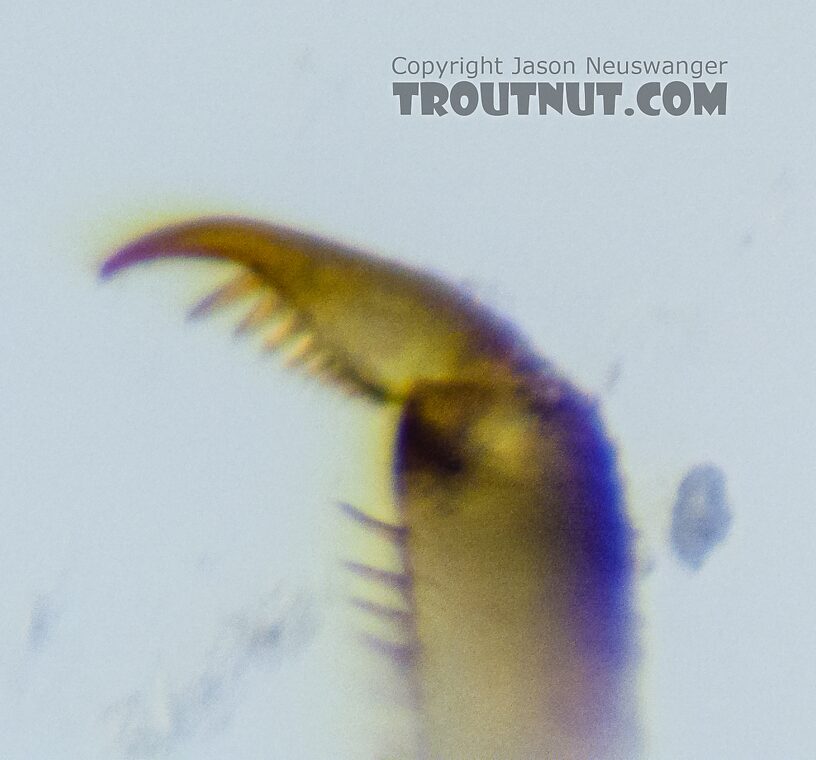Blog & Latest Updates
Fly Fishing Articles
Insects by Common Name


Female Baetis bicaudatus (BWO) Mayfly Nymph Pictures
Classification
Kingdom
Animalia (Animals)
» Phylum
Arthropoda (Arthropods)
» Class
Insecta (Insects)
» Order
Ephemeroptera (Mayflies)
» Family
Baetidae (Blue-Winged Olives)
» Genus
Baetis (Blue-Winged Olives)
» Species
bicaudatus (BWO)
I collected this one along with a male that was quite a bit smaller but equally ready to emerge in mid April.
I spent (Spent: The wing position of many aquatic insects when they fall on the water after mating. The wings of both sides lay flat on the water. The word may be used to describe insects with their wings in that position, as well as the position itself.) quite a while on the identifications, because they really don't look very much like the Baetis bicaudatus nymph I caught last year in Idaho. However, the presence of hind wing pads (
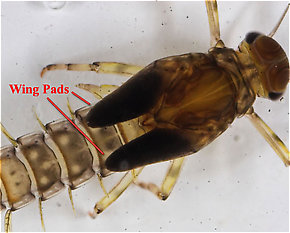
The wing pads on this final instar Baetidae mayfly nymph are extremely dark.
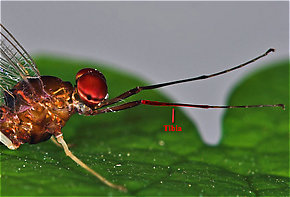
The tibia of this Isonychia bicolor mayfly spinner is highlighted in red.
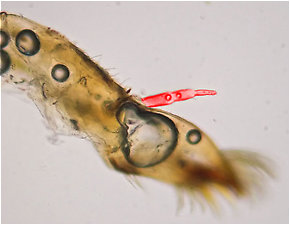
The palp on the maxilla of an Ephemerella nymph (detached and photographed under a microscope) is highlighted in red here.
The microscope pictures for this specimen aren't from the same exact nymph, but a mixture of a few others of the same kind that I didn't mind dissecting.
This mayfly was collected from Holder Creek on April 12th, 2021 and added to Troutnut.com on April 13th, 2021.
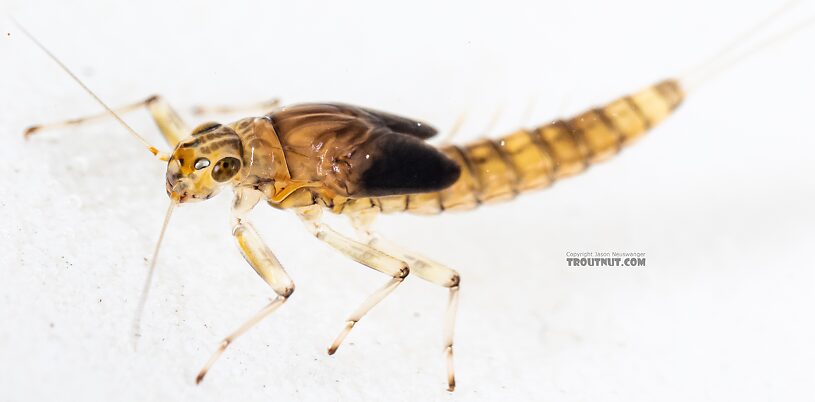
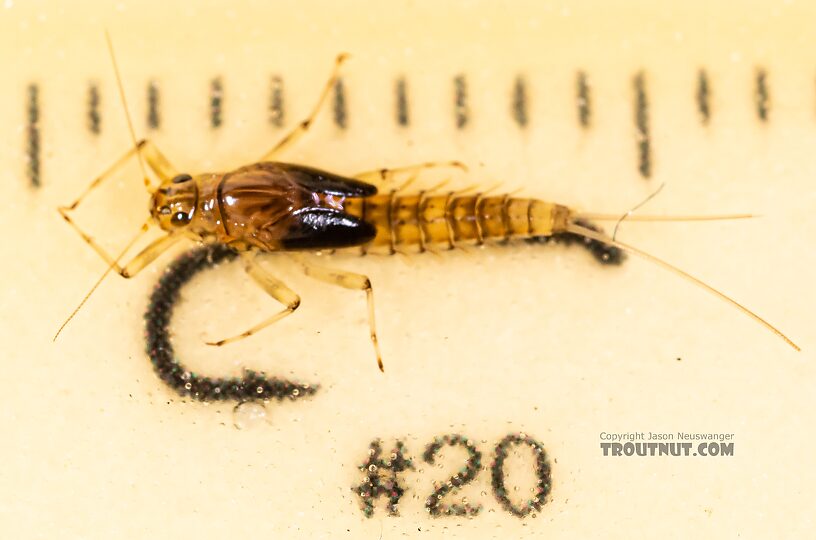
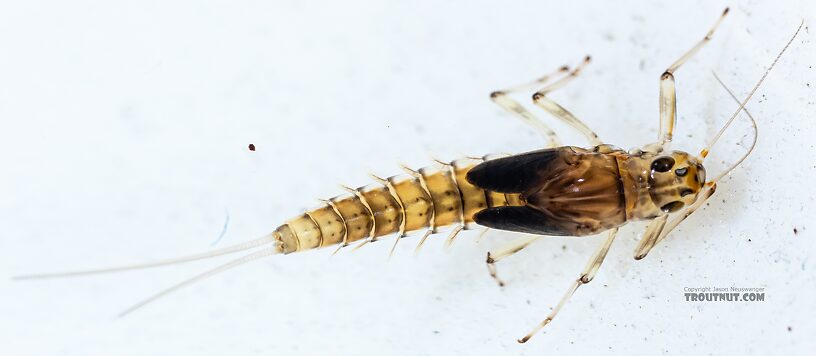
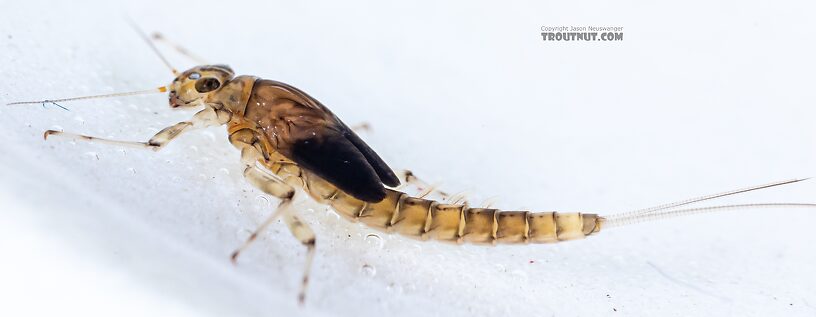
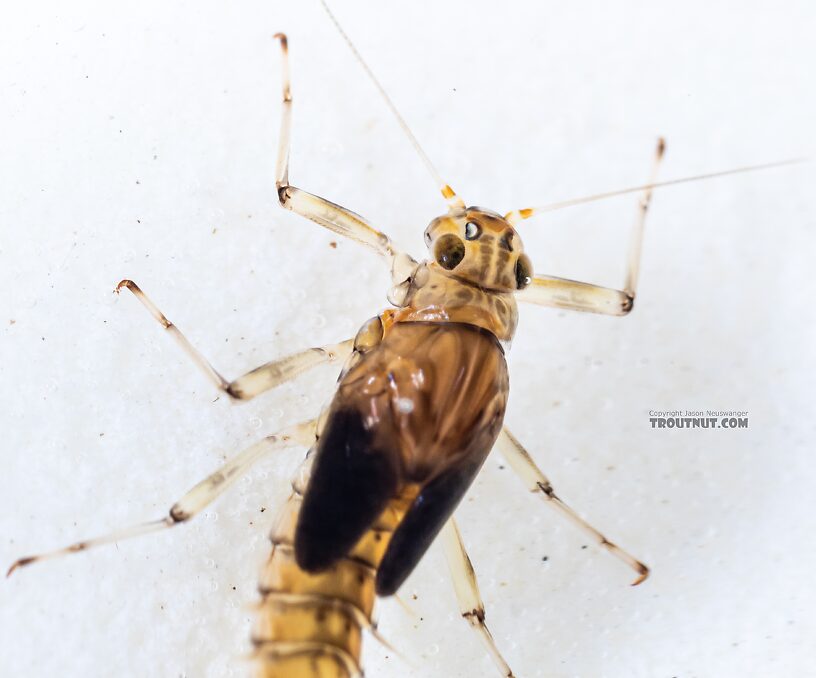
This one actually shows the dark-bilobed markings on the pronotum characteristic of the Baetis rhodandi group (to which Baetis tricaudatus belongs). Most specimens I've seen don't have it.
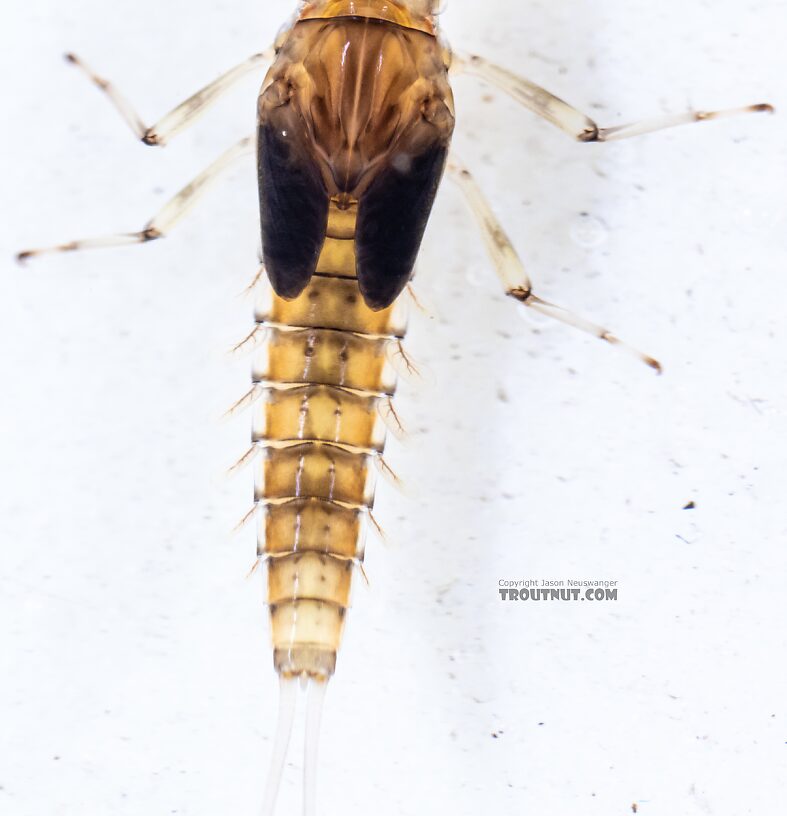
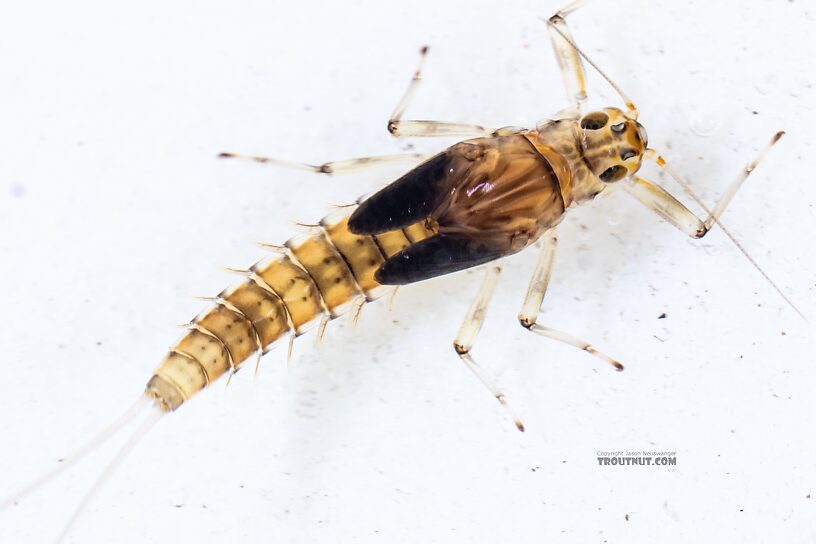
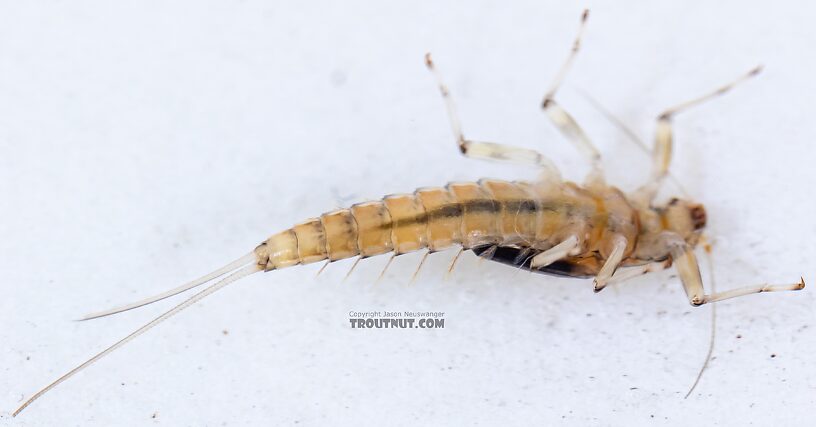
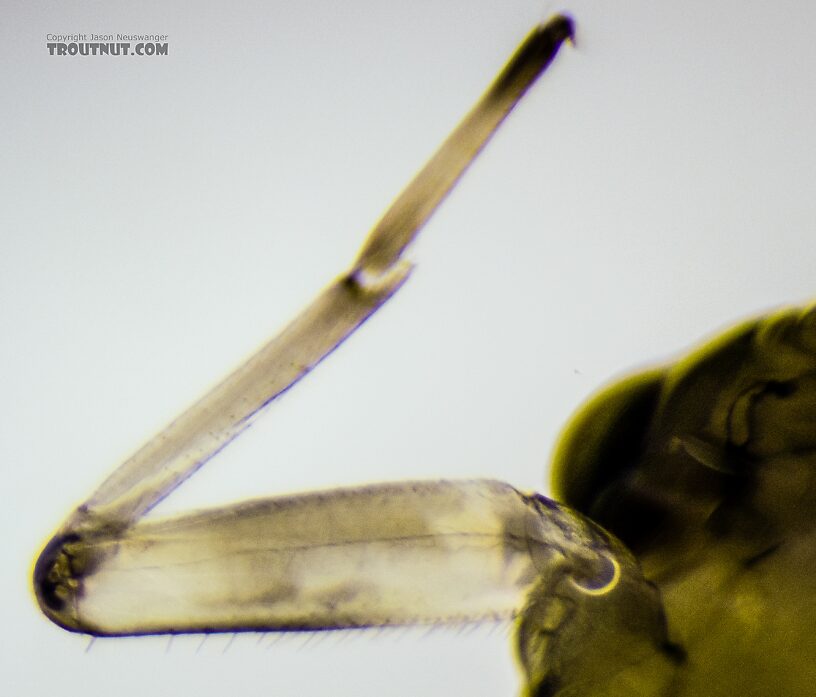
The tibiae lack a thick fringe of setae, pointing away from Acentrella and toward Baetis instead.
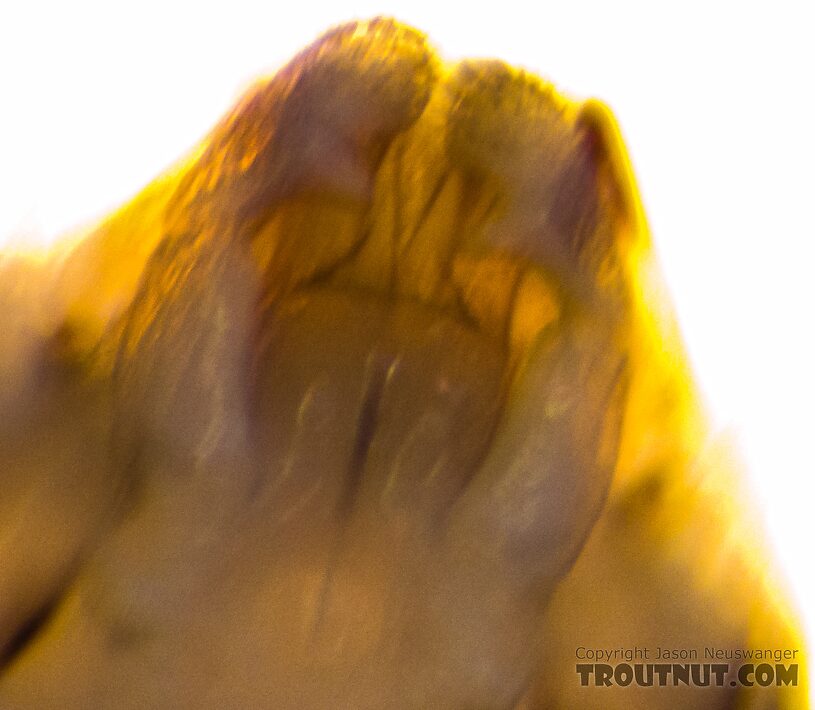
Ventral closeup of the mouthparts highlighting the labial palps. If you view each one as an arm with a hand in a mitten, the "thumb" of the mitten is the part that points clearly toward Baetis rather than Acentrella.
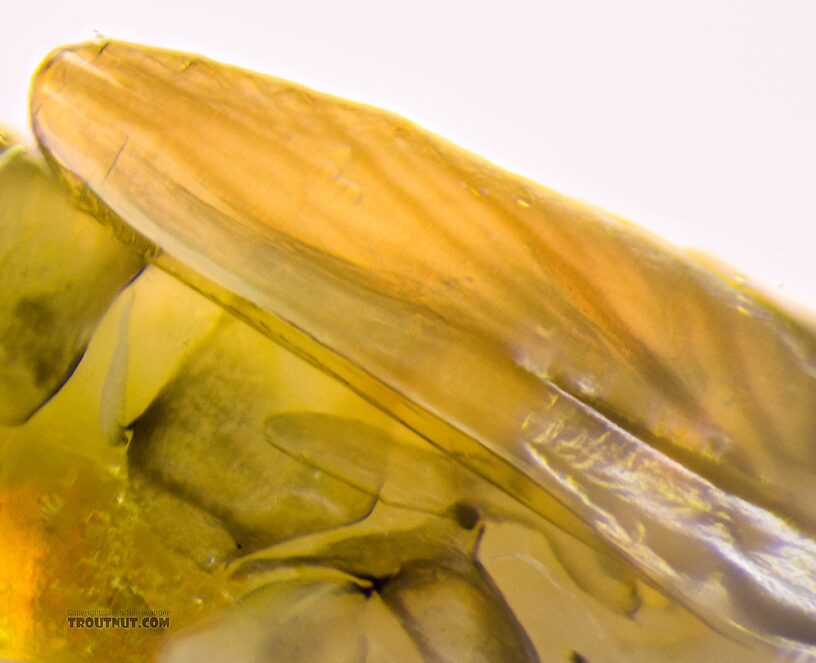
The hind wingpad is clearly visible in the bottom center but not yet darkened in this specimen.
Start a Discussion of this Nymph:
Top 10 Fly Hatches
Top Gift Shop Designs
Eat mayflies.
Top Insect Specimens
Miscellaneous Sites
Troutnut.com is copyright © 2004-2024 Jason
Neuswanger (email Jason). See my FAQ for information about use of my images.
 privacy policy
privacy policy

